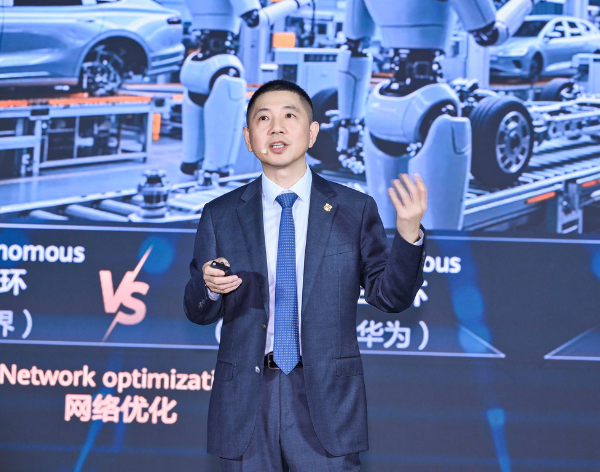Through top-tier quality and customer-centric solutions, the technology giant has supported a raft of industries worldwide to navigate digital transformation correctly.
At the Huawei Connect 2025 conference in Shanghai, which took place last month, Huawei once again set the stage to redefine the future of data communication with its latest offerings.
Kicking off the summit on 18 September, Leon Wang, president, data communication product line at Huawei, emphasised “the next-generation data communication infrastructure must not only support the rapid proliferation of AI applications but also ensure high performance, reliability and security.”
He explained that future networks should connect not just people, but all things, AI agents and intelligence, allowing networks to manage themselves and adapt to the needs of a business.
As a result, the company introduced the fully upgraded AI-centric Xinghe Intelligent Network Solution.
The solution, which features a three-layer architecture, AI-centric brain, AI-centric connectivity and AI-centric devices, in a bid to accelerate deep integration of AI and networks.
It provides companies with scenario-specific connectivity services and experiences, including zero-packet loss, high throughput, deterministic low latency and all-scenario zero-trust security.
Stemmed from the idea of AI-ready networks, AI-powered networks and AI-powered security, the solution brings intelligence to industries.
At the keynote, Wang said: “We’re entering an era of AI, and AI is continuously advancing in both breadth and depth.”
“These are all examples of AI entering our lives. And for businesses, AI will enter our lives even more rapidly. It’s predicted that by 2030, 75% of our daily tasks will be assisted by AI. Similarly, AI will also pose increasing challenges to future network infrastructure.”
He continued: “AI is reshaping the world at unprecedented speed, transforming enterprise operations and posing three major demands for networks: efficient computing power release, assured service experience, and protection against unknown threats.”
In response, Huawei’s Xinghe Intelligent Network leverages a three-layer AI-centric architecture to empower four core solutions: Xinghe AI Campus, Xinghe Intelligent WAN, Xinghe AI Fabric 2.0 and Xinghe AI Network Security, advancing intelligent transformation across industries.
- Xinghe AI Campus brings security from the digital world into physical spaces. Huawei’s Wi-Fi Shield and access prevention tools protect air interface and endpoints, while the industry’s first spycam-detecting wireless AP safeguards privacy 24/7.
- Xinghe AI Fabric 2.0 maximises computing power. It reduces service rollout from seven days to five minutes, monitors 200,000 service flows in real time, and enables flexible scheduling of XPUs for inference and training.
- Xinghe Intelligent WAN integrates high-capacity computing-network services. Using the lossless Starnet algorithm and vector engine, it delivers zero-packet-loss transmission with less than 5% efficiency loss, while keeping sensitive data on-premises.
- Xinghe AI Network Security takes an “AI vs. AI” approach. Trained on global data from over 100 cloud nodes of Huawei, it achieves a 95% detection rate for unknown threats.
The event featured real-world examples from different sectors, including Wifirst in France, Itaú Bank and Telebras in Brazil and in government, Luo Qiwei, Director of the Security Department at the Government Services and Data Management Bureau of Guangdong Province, highlighted how AI protects IT assets.
“AI-powered network protection safeguards government IT assets, ensuring secure and efficient operations for critical public services,” he said.
Additionally, at the summit, Huawei showcased joint innovations with institutions like Tsinghua University, Peking University, Shandong University and iFLYTEK, as well as industry projects with Shenzhen, China Pacific Insurance and Resorts World Sentosa.
These case studies show how AI-centric networks drive intelligent transformation across education, finance, power and enterprise sectors, just some of the sectors the technology giant supports.
Image: Leon Wang, President of Huawei’s Data Communication Product Line, delivering a keynote speech







